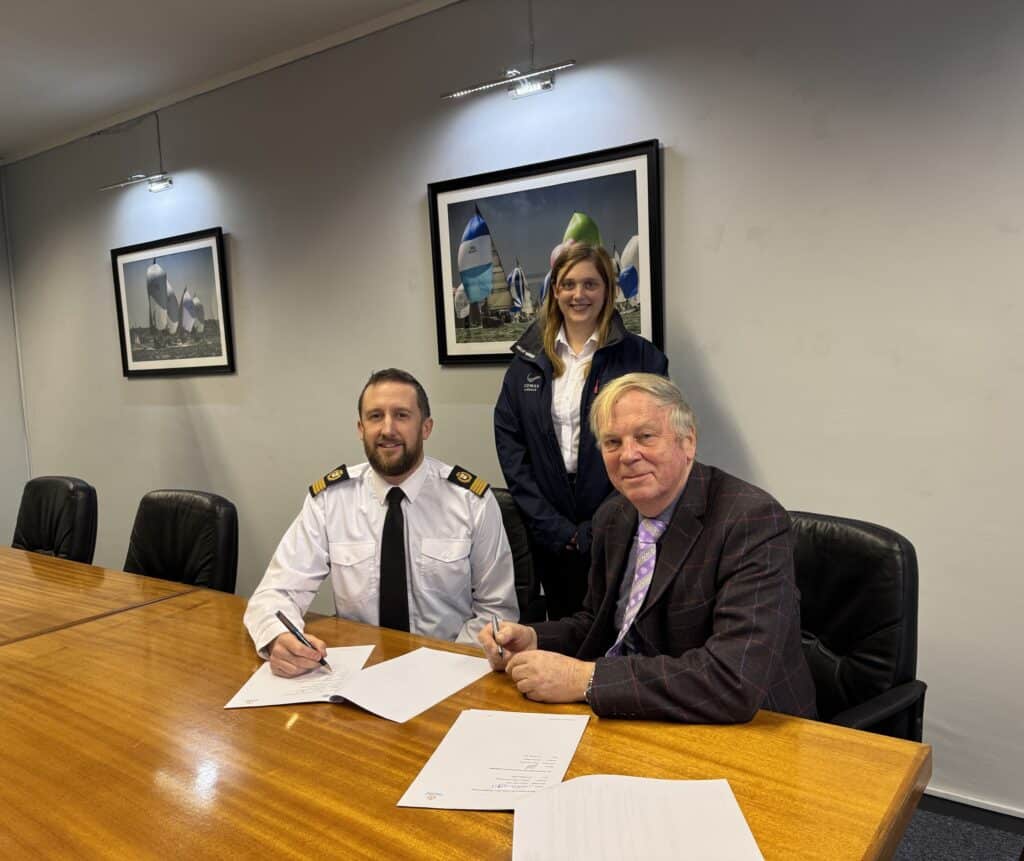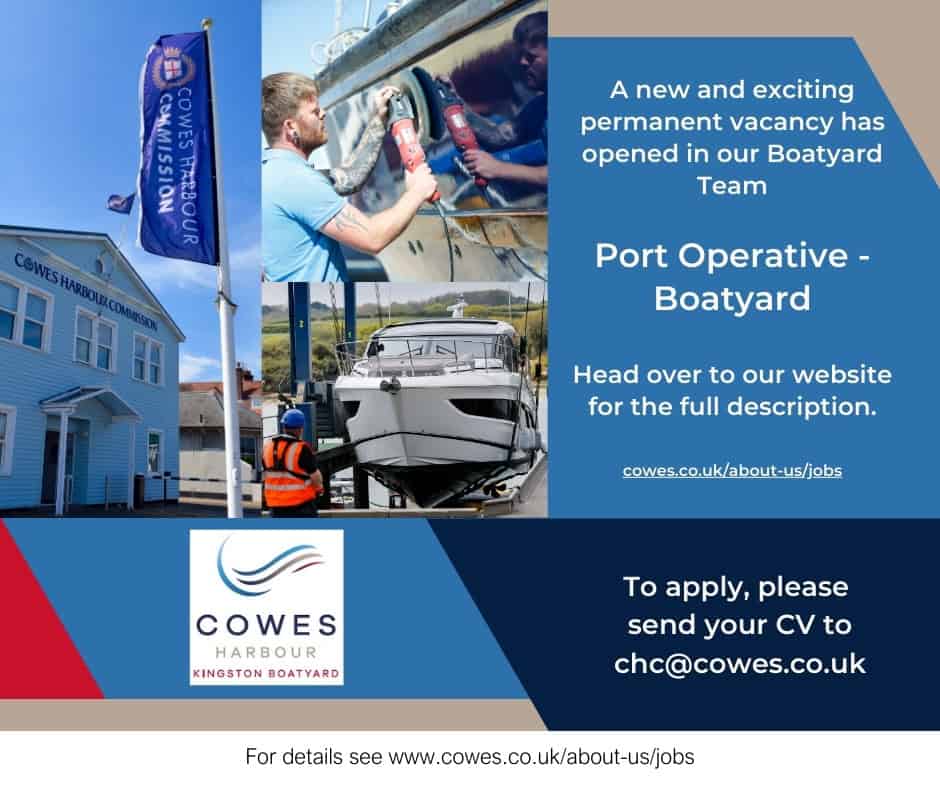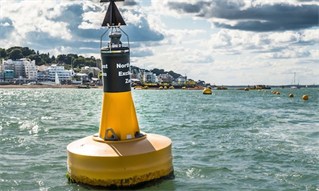
We are all used to our local Solent hazards being clearly marked with the necessary buoys, most of which are lighted; the Exclusion Zone around the new Cowes breakwater being a prime example of cardinal and special mark buoys. This is all made possible by recent advances in solar power, lighting technology and plastic buoy construction.
Lighted buoys did not arrive until the early 1880s when Pintsch gas buoys were introduced in the Thames Estuary by Trinity House. Up until this time the only afloat lighting was provide by manned lightvessels. In the Solent there were lightvessels at the Nab shoal, Warner (east of the Portsmouth forts), Calshot Spit, Calshot (on the east side of the channel) and another vessel marking the entrance to the Itchen. There were also lights on the Portsmouth forts. The inshore and harbour buoys were not lighted and many would have been of wooden construction, of a conical pattern that had been in use for several hundred years.
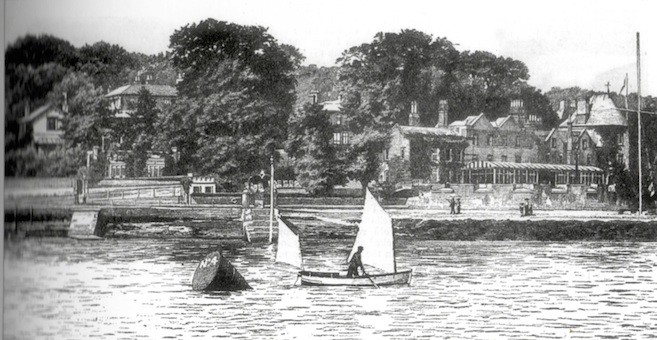
Post 1860 engraving showing wooden buoy
A yachting pilot of 1892* mentions a red and white checked buoy to the east of the Medina estuary entrance and an all red buoy on the west side. At that time there was no precise standard for port and starboard marking of channels. Solent channels were marked with bi-coloured buoys on the port hand when entering the channel (red and white check in this case) and solidly coloured buoys on the starboard side.
There was an international agreement in 1936 for port hand buoys to be a red can shape, of solid colour or check and starboard buoys to be conical black or black-and-white check. The shape of the buoy thus became of fundamental importance.
The 1892 pilot goes on to suggest that yachts would usually anchor in Cowes Roads unless coming in to the harbour to lay-up or for repairs and notes that “Cowes is not a very interesting place in itself, but it contains some excellent shops”! (Pascal Atkey and Benzie are mentioned.)
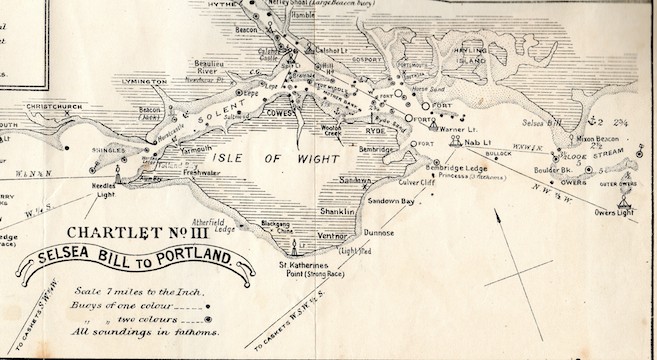
Chartlet – Selsea Bill to Portland
By 1946 the harbour had not updated to the international buoyage system but did have a red light on the port hand entrance buoy and there was a 60 flash per minute white light on the Trinity House buoy on the Prince Consort station.
Trinity House has the responsibility for all aids to navigation in UK waters and maintains most of the coastal buoyage. Local harbour and river authorities provide buoyage to meet local requirements but the navigational function of these buoys has to be approved by Trinity House who also inspect the buoys. The Solent is unusual in that most of the buoys were originally laid by the Admiralty. The buoyage from Prince Consort to the west was taken over by Trinity House in 1868 while the buoys to the east are maintained by the Queen’s Harbour Master, Portsmouth.
The first lighted buoys were gas buoys with the complete iron buoy body filled with petroleum gas. The original buoys had a continuously burning light but there were already steady developments with flasher mechanisms and then acetylene lighting. The acetylene was stored in steel cylinders and provided a brighter light than the petroleum gas lights. These buoy lights were remarkably reliable and buoys could operate for one year between replacements of the gas cylinders, although this time period did depend on the flashing character of the buoy.
Electric buoy lighting developed in the 1950s and gradually replaced gas lighting, usually where the buoy was in easy reach of the shore for the necessary regular changes of the primary batteries that powered the light. It was not until the late 1980s that gas was generally phased out when reliable solar panels were introduced so that an electric light could be powered from a battery recharged by solar panels.
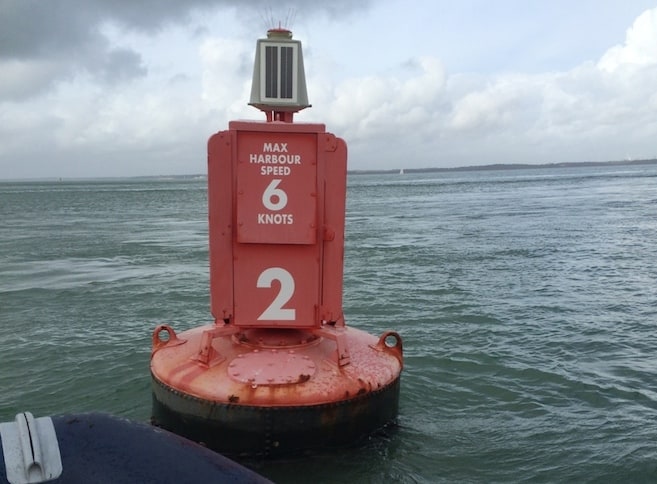
Cowes Harbour No. 2 buoy with solar panels
There followed rapid developments in solar panel and then light emitting diode (LED) technologies. LEDs have much lower power consumption than filament lamps, have considerably longer working lives and can be manufactured from different materials to produce different colours of light. For a given power consumption a red, green, yellow, blue or white LED will produce approximately equal light intensities. Gas and electric lights had to have coloured filters or coloured lenses to provide coloured light and these had the disadvantage of absorbing almost a half of the light produced by the gas flame or filament lamp.
The efficiency of LEDs has increased rapidly in recent years and it is now possible to manufacture self-contained lanterns that combine the LED light unit, solar panels and a rechargeable battery.
Over the course of the last century buoys have been built of riveted iron, welded steel, fibreglass and more recently of rotomoulded plastic. Steel buoys require regular attention to prevent corrosion and to maintain their signal colours, although potentially, they have a very long working life. There are many examples of these buoys that are over 100 years old. It would be interesting to know more about the history of the steel spherical buoys that are now used for the Solent race marks; it is thought that they date back at least to the 1950s and were originally Admiralty mooring buoys. Modern moulded plastic buoys are manufactured from materials that are slightly flexible and can withstand impacts and abrasion while maintaining their distinct signal colour; the bonus being that they should only require periodic cleaning and maintenance.
Today, all the navigation marks in Cowes Harbour are serviced and maintained by Cowes Harbour Commission’s Kingston Marine Services (KMS). As well as the harbour marks, KMS looks after the majority of the seasonal race marks for the SCRA (Solent Cruising & Racing Association) and the Victory Class in Portsmouth. KMS also take care of temporary buoy requirements during the J.P. Morgan Asset Management Round the Island Race and Aberdeen Asset Management Cowes Week.
The SCRA marks are generally laid by the beginning of March each year and stay out until December, and so you may soon see the KMS team on Multi-Cat Seaclear hard at work retrieving race marks for winter maintenance and then storage at their Kingston Wharf site in East Cowes.
Article written by Adrian Wilkins, author of A History of Floating Aids to Navigation, and Vice Chairman of the Cowes Harbour Advisory Committee representing Medina Combined Clubs.
References:
*Our Silver Streak. The Yachtsman’s Guide from Harwich to Scilly. By A. Underhill. Pub. Norie & Wilson, 1892.
Further information:
www.trinityhouse.co.uk/lighthouses/buoys
Top photo: Cowes breakwater Exclusion Zone North Cardinal buoy. Credit: Nick Edwards.




